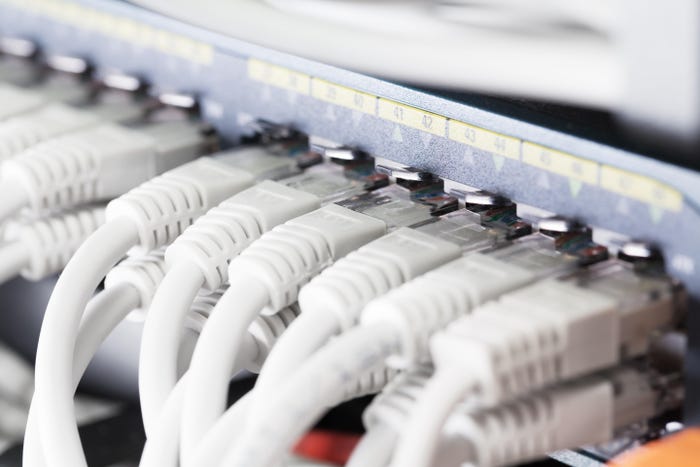Andrew Foss, CEO, Swan Labs Corp.
"The price performance of networking and data transmission are so much better in the IP space."
April 8, 2005

What's the world's best transport for disaster recovery? Andrew Foss has one answer: "IP is absolutely the most cost-effective way to get bandwidth and connectivity across the globe. The price performance of networking and data transmission are is so much better in the IP space than anything else," he says. Fibre Channel? No comparison, per Foss.
But the CEO of Swan Labs Corp. also knows IP's Achilles heel -- poor performance. The packetized, asynchronous nature of the Internet Protocol stack has been a showstopper for many IT managers. They're paying handsomely for dedicated links to protect remote data. If disaster strikes, the thinking goes, paying a premium ensures reliable and fast restoral.
San Jose, Calif.-based Swan Labs thinks there's a market in enabling users to stick with IP. The Internet itself, Foss says, can be the conduit for reliable online backup and disaster recovery, even in synchronous mode. What's needed is technology that streamlines IP traffic on WAN links.
It's a credo that's catching on in the IT world, spurring an array of solutions from the likes of Network Executive Software Inc. (NetEx) and Peribit Networks Inc. (see WANs Shape Up for Storage).
According to Foss, Swan Labs distinguishes itself by combining WAN optimization and application acceleration. Its appliances use network-based techniques like compression and caching to reduce the profile of data that's replicated across IP links. (That's WAN optimization.) Software options, including ones the company acquired with the purchase of Pivia last year, cut down on repetition that's characteristic of specific applications like email or Web data. (Read: application acceleration.)Swan Labs debuted in August 2004 with $15 million in funding, including investment from the venture firm started by Eric Benhamou, the famed former CEO of 3Com Corp., who also heads up Swan Labs' board (see Swan Intros WAN Accelerator).
Foss himself has a colorful resume, having worked at Network Translation Inc. in the early 1990s and following it to acquirer Cisco Systems Inc. (Nasdaq: CSCO). He later co-founded Caw Networks Inc., a Web analyzer that was sold to Spirent Communications in 2002.
We caught up with Foss March 25 by phone, eager to find out how WAN acceleration relates specifically to storage networking. Click on the links below for specific portions of this Byte and Switch interview:
Mary Jander, Site Editor, Byte and Switch
Byte and Switch: So what's the problem Swan Labs is trying to solve?Foss: We always hear from customers, 'My application works fine on the LAN, but not on the WAN. More bandwidth doesn't help.' We found that understanding the reaction of protocols to the serialization of applications was at the root of why a WAN could cause so much trouble, even when bandwidth was available.
Byte and Switch: How does that translate to SANscreen?
Foss: We optimize the network and the protocols so you can get much greater throughput across your WAN. We combine that with application acceleration techniques that allow you to do more processing locally and to accelerate applications.
Byte and Switch: You seem to be combining approaches to WAN optimization. Can you elaborate?
Foss: We live in a bifurcated technology space. One group of suppliers solves the WAN issue by compressing and doing some things at the network layer. That gives some benefit. Then, others offload servers and accelerate and correct some of the application's serialization effects. We combine the best of both.On the network level, we can do building blocks. We say so much of the WAN bandwidth is to be used for disaster recovery, making sure you get the space on the network that you need for the application.
A the network level, you can compress and cache the data. When you combine that with an understanding of the protocols in use, you can actually provide local acknowledgement and local service for much of the chattiness and serialization of the application itself, so you can get data flowing as quickly as possible.
Byte and Switch: Can you give an example of how this benefits customers?
Foss: One site, an asset management company that runs a disaster recovery site, had two T3s prior to working with us. A weekly backup of data took nine days. They used 90 Mbit/s of bandwidth for the backup between two sites. Having deployed us, their backup now uses just 12 Mbit/s of bandwidth. They shut one T3 down and use the rest for corporate applications. And they have full backups every other day.
Byte and Switch: You sell your software and appliance together, right? Do you or will you sell software separately?Foss: Software is not sold separately. We figure there'd be too much time spent trying to make the software work on various operating systems. And just from the customer's perspective, it is so much better to have it delivered in an appliance where everything just works properly.
Byte and Switch: What role does the software you acquired from Pivia play in your solution? (See Swan Labs Picks Up Pivia.)
Foss: Pivia gives us application acceleration that works with our network.... We sell the Pivia Web acceleration and application acceleration modules on top of our network solution, as a separate option with the appliance. The software is now generating a third of our overall revenue and growing fast.
Byte and Switch: So you charge extra for the Pivia software?
Foss: The way our architecture is built, you get the base of broad capabilities that gives you a handle on network performance, then a la carte modules for even greater performance improvement for mission-critical applications.Byte and Switch: How much performance improvement can I get by adding Pivia?
Foss: On average we're seeing 2- to 4-Gbit/s improvement in end-to-end user response time, and sometimes a 20 times improvement.... We get a 10-times improvement with our appliance and now 20 times with Pivia.
Byte and Switch: Give us an example.
Foss: We have a site that is a call center, and while the users are in their application, which is Web based, they are also on the phone. With the core capability they first deployed from us they get perfectly reliable telephone use and their Web application responds as fast as it ever did, even when the network was idle. With Web acceleration, now they get response times two to three times faster than before at any level of network use.
Byte and Switch: What speeds do you support in networks?Foss: We do up to OC48 [2.5 Gbit/s].
Byte and Switch: What about 10 Gbit/s?
Foss: It will be based on cost and availability of technology... Our value proposition becomes more important at higher speeds.
Byte and Switch: What about security?
Foss: All of our appliances support SSL and we encourage encryption as well as SSL.Byte and Switch: Do you do the encryption?
Foss: Sometimes we do the encryption. It's much better performance-wise to let the network do the encryption than to have servers and clients themselves handling it. A significant portion of our customers are having us do the encryption, but I'm not sure exactly how many.
Byte and Switch: Will you pursue bundling arrangements and partnerships with other suppliers?
Foss: Yes, absolutely. We are actively working with storage companies selling both NAS and SAN technologies that cross IP networks doing iSCSI. We recently announced a relationship with Intransa Inc. For remote site backup, we see 10 to 15 times improvement with Intransa and iSCSI protocols. More to come.
Byte and Switch: You describe your company as a WAN optimization and application acceleration specialist, not as a storage networking firm. What percentage of your business comes from storage applications?Foss: About one-third of our deployments are disaster recovery, primarily based on products from EMC Corp. (NYSE: EMC), Veritas Software Corp. (Nasdaq: VRTS), Network Appliance Inc. (Nasdaq: NTAP), and Intransa.
The other two-thirds of our business is a combination of general WAN optimization and Web acceleration. Many customers have internal enterprise portals and are accelerating core enterprise applications... SAP, Oracle, Siebel, and so forth. Also, there's a lot of broad-based business based kind of on 'My network is getting bogged down and slowed down with Exchange.' These organizations are looking at spending a lot of money to upgrade bandwidth, or else finding a smarter solution.
Byte and Switch: How would you characterize the growth of your products in the storage market?
Foss: The segment of customers using us for storage is growing very fast. We see quarter-on-quarter doubling. Disaster recovery is clearly an area that's growing aggressively. The other is IP VPN.
Byte and Switch: What's driving the storage networking growth?Foss: Disaster recovery is a hot issue.
The big trend is that all of our main mission-critical enterprises are getting so distributed. We can no longer talk about a financial trading institution based in New York. Business is really a global, worldwide situation.
People are in some sense driven by recent awareness about security and regulations such as Sarbanes-Oxley at the business level. People are becoming much more aware of the business consequences of either losing temporary connectivity or access to core mission critical data.
There are other things... Two years ago, U.S. Department of Homeland Security distributed a document saying banks needed disaster recovery over a 200-mile radius. People bought millions of dollars worth of technology to support this, only to find that over a distance of 60 nautical miles, synchronous replication time was significantly reduced.
With us, it doesn't matter whether you're traversing 60, 200, or 2,000 nautical miles. You don't have to provision expensive network technology. You could use commodity IP networking technology and get synchronous disaster recovery.Byte and Switch: So, IP's the way to do disaster recovery?
Foss: IP is absolutely the most cost-effective way to get bandwidth and connectivity across the globe. The price performance of networking and data transmission are so much better in the IP space than everything else, particularly when you look at Fibre Channel and proprietary technologies.
IP is the largest area of growth, not only with dedicated MPLS bandwidth replacing frame relay, but with just general Internet use.
Byte and Switch: So it's really okay to use the Internet for disaster recovery?
Foss: We do quite a bit over the shared Internet... The core Internet has a tremendous amount of bandwidth available. We've invested heavily in laying fiber all over the planet, and service provides are wrestling with how to make that available to paying customers. It's lower-quality bandwidth than the more deterministic telecom networks a la frame relay, but when properly used you can get better performance than over telephony networks.So, either dedicated MPLS or Internet is fine with us. We ourselves have four development and marketing offices worldwide and run the whole business over a pure Internet VPN. And we have a VOIP network for a fraction of hte cost of frame relay.
Byte and Switch: How big is Swan Labs? How many customers do you have and where's your customer focus?
Foss: We have about 60 customers in 12 countries. We're growing, particularly in Europe and Asia. We believe our main value proposition is the ability to save hard dollar expenses every month, the cost of your WAN bandwidth. The higher-level value proposition is making applications work acceptably and consistently fast anywhere in the organization.
We are finding we can offer six to nine months ROI in the North American market. But in North America, we have the lowest bandwidth prices in the world. In Europe, we look at the legacy of PTTs, the rapid growth and oversubscription of infrastructure. They are paying orders of magnitude higher costs for poor-quality bandwidth. That's where we see our growth.
Byte and Switch: Who's your competition?Foss: There is really nobody who competes with us for the larger strategic enterprise application-shaping strategy. [Ed note: Vendor platitude alert!] Tactically, we're competing with Expand Networks Inc., Packeteer Inc. (Nasdaq: PKTR), and Peribit Networks Inc. when we are engaged in a situation where we're just looking to save on WAN bandwidth for the customer. We see FineGround Networks, NetScaler Inc., Redline Communications Inc., and Tacit Networks Inc.
You May Also Like
2024 InformationWeek US IT Salary Report
Aug 15, 20242022 State of ITOps and SecOps
Jun 21, 2022


